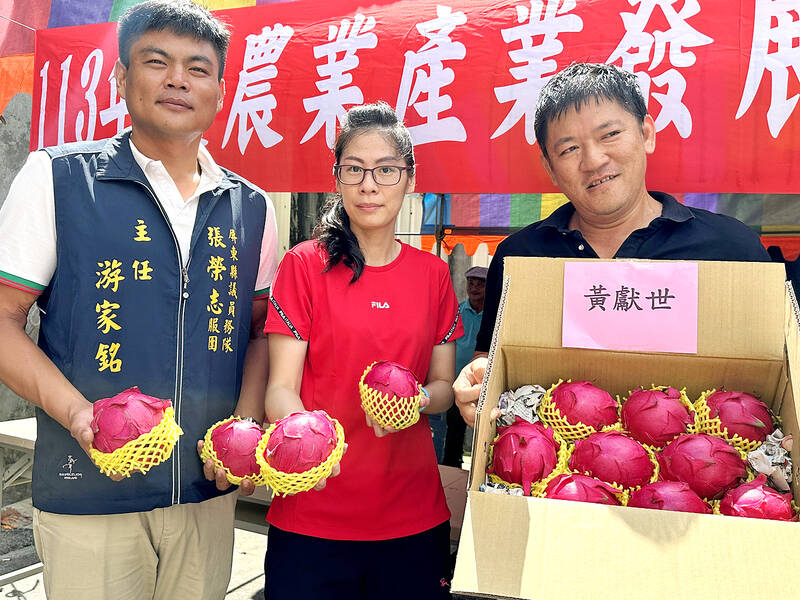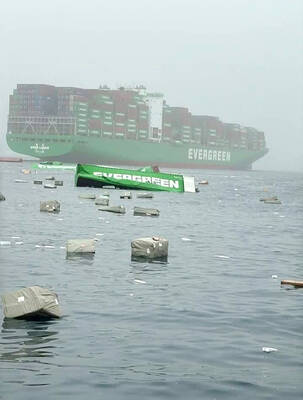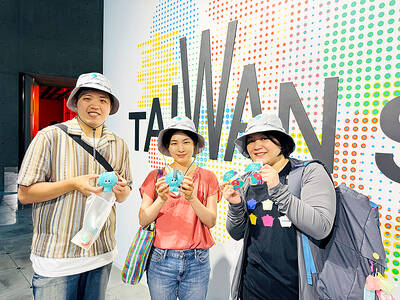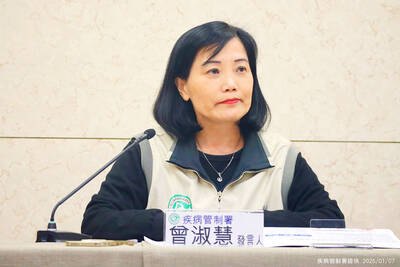Red dragon fruit exports are expected to reach 338 tonnes this year, while Jinhuang mangoes could be exported to Japan next year, Deputy Minister of Agriculture Hu Jong-i (胡忠一) said yesterday.
The ministry on Monday sent a test shipment of 192kg of red dragon fruit to Japan following eight years of negotiations, Hu said, adding that the fruit was well-received and a shipment of 6 tonnes would be sent on Tuesday.
A total of 338 tonnes of the fruit is expected to be exported to Japan by the end of this year, and would increase next year, he said.

Photo: Tsai Tsung-hsien, Taipei Times
“We negotiated with Japan for eight years on the sale of red dragon fruit, and I last met with Japanese officials on May 28,” he said.
Taiwan has exported the white-fleshed variety of dragon fruit to Japan since 2010.
The nation currently exports 50 kinds of fruit to foreign markets, but only 11 are permitted for sale in Japan, Hu said.
“We would also start exporting Jinhuang mangoes to Japan next year,” he said. “We already sell other varieties of mango in Japan, including Haden mangoes and Taiwan’s Aiwen mangoes.”
The ministry hopes to complete bilateral quarantine negotiations with Japan as soon as possible, after which it would instruct farmers on how to handle fruit in accordance with Japan’s quarantine regulations, he said.
The ministry on June 5 finished negotiations with Japan on the export of red dragon fruit, and on Monday, processing plants in Taiwan implemented the packaging requirements set by Japan, Hu said.
Japanese quarantine regulations stipulate that the center point of the fruit must reach 46.5°C for 30 minutes before being shipped, he said.
Taiwan would export red dragon fruit to Japan under the Taiwan Good Agricultural Practice 2020 Plus food processing standards, he said.
The fruit would account for 1 percent of the Japanese market, with plans to increase exports annually, he said.
“Japan currently imports red dragon fruit mainly from Vietnam. Although Taiwan produces less of the fruit, the Taiwanese variant has a higher anthocyanin content, and is sweeter and larger,” he said, adding that the price of the Taiwanese red dragon fruit would be 50 percent more.
Separately, the ministry said that Taiwanese fruit in New Zealand had been selling well, with exports of lychees to New Zealand reaching US$172,000 last year.
Exports to the country would rise after Wellington in April approved the importation of Taiwanese pineapples, it said.
Meanwhile, sales of orchids and grouper to the US, and pork to the Philippines were also rising, with one container of product exported to the countries monthly, it said.
Overall, agriculture exports had increased 4.68 percent since 2016, it said.

CARGO LOSS: About 50 containers at the stern of the ‘Ever Lunar’ cargo ship went overboard, prompting the temporary closure of the port and disrupting operations Evergreen Marine Corp, Taiwan’s largest container shipper, yesterday said that all crew members aboard the Ever Lunar (長月) were safe after dozens of containers fell overboard off the coast of Peru the previous day. The incident occurred at 9:40am on Friday as the Ever Lunar was anchored and waiting to enter the Port of Callao when it suddenly experienced severe rolling, Evergreen said in a statement. The rolling, which caused the containers to fall, might have been caused by factors including a tsunami triggered by an earthquake in Russia, poor winter sea conditions in South America or a sudden influx of waves,

The Ministry of Culture yesterday officially launched the “We TAIWAN” cultural program on Osaka’s Nakanoshima sandbank, with the program’s mascot receiving overwhelming popularity. The cultural program, which runs from Aug. 2 to 20, was designed to partner with and capitalize on the 2025 World Expo that is being held in Osaka, Japan, from April 13 to Oct. 13, the ministry said. On the first day of the cultural program, its mascot, a green creature named “a-We,” proved to be extremely popular, as its merch was immediately in high demand. Long lines formed yesterday for the opening

The Taipei Summer Festival is to begin tomorrow at Dadaocheng Wharf (大稻埕), featuring four themed firework shows and five live music performances throughout the month, the Taipei Department of Information and Tourism said today. The festival in the city’s Datong District (大同) is to run until Aug. 30, holding firework displays on Wednesdays and the final Saturday of the event. The first show is scheduled for tomorrow, followed by Aug. 13, 20 and 30. To celebrate the 30th anniversary of Disney Pixar's movie Toy Story, the festival has partnered with Walt Disney Co (Taiwan) to host a special themed area on

BE CAREFUL: The virus rarely causes severe illness or death, but newborns, older people and those with medical conditions are at risk of more severe illness As more than 7,000 cases of chikungunya fever have been reported in China’s Guangdong Province this year, including 2,892 new cases last week, the Centers for Disease Control (CDC) yesterday said it is monitoring the situation and considering raising the travel notice level, which might be announced today. The CDC issued a level 1 travel notice, or “watch,” for Guangdong Province on July 22, citing an outbreak in Foshan, a manufacturing hub in the south of the province, that was reported early last month. Between July 27 and Saturday, the province reported 2,892 new cases of chikungunya, reaching a total of 7,716